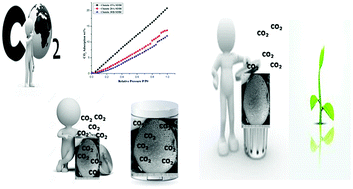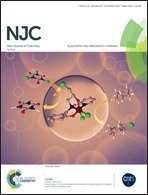Organo-clay hybrid hydrophobic spherical styrene divinylbenzene crosslink beads for high-performance carbon dioxide capture†
Abstract
Herein, we report carbon dioxide sorption properties for a series of cloisite-containing crosslink hybrid materials. These materials were prepared by copolymerizing styrene divinylbenzene in the presence of various cloisites through suspension polymerization in one pot to obtain uniform spherical beads. The homopolymer formed during the polymerization was separated from the hybrid. The synthetic strategy is user-friendly and cost-effective, can be easily scaled up for production, and provides materials with good mechanical strength. The microporous polymeric spheres containing organo-clay (cloisite) showed a high surface area of ∼80–370 m2 g−1 with a microsphere size of ∼4.4 nm. These polymeric spherical beads were hydrophobic and thermally stable up to 300 °C. They showed high carbon dioxide uptake (up to ∼20.7 wt% at 273 K/1.0 bar) due to lone pair electrons of heteroatom, which might sharpen the interaction between the CO2 molecules and polymeric matrices through local dipole/quadruple interaction. Moreover, they showed good capacity to store CO2 due to the presence of quaternary ammonium groups in the clay and a large amount of narrow microspheres (∼4.4 nm). The equilibrium CO2 capacities of the prepared spherical beads were due to the interaction between quaternary ammonium and the negatively charged oxygen atoms of CO2, and these spherical beads showed potential applications in gas adsorption and separation.



 Please wait while we load your content...
Please wait while we load your content...